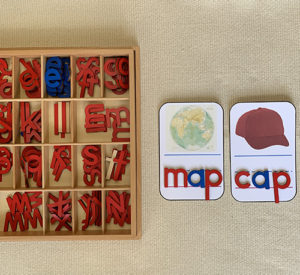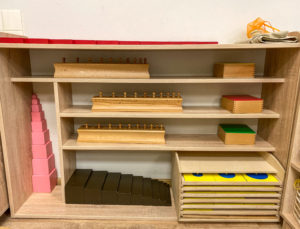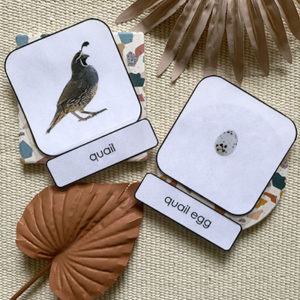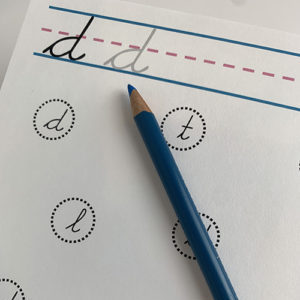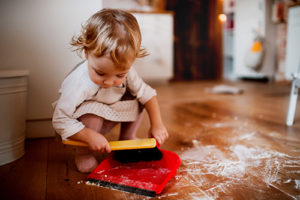Why I Celebrate the Lunar New Year
I used to live in a beautiful city called Nanjing, China with my family. (Actually we lived there twice!) I fell in love with Chinese culture, language, and was fortunate to work at an absolutely amazing Montessori school called Hannah Children’s House under the direction of my good friend and AMI Montessori Directress and Translator, Brenda Shi. (We have dreams of opening a bilingual Montessori school together one day…)
Lunar New Year has become a special time in my family as we try to maintain some of the traditions shared with us while living in China. I also incorporate Lunar New Year activities in my classroom each year in January or February (Lunar New Year falls on a new date each year depending on the lunar calendar.) I often share food, music, books, and traditions like passing out Red Envelopes (or Hóngbāo / 红包) as they are called in Mandarin Chinese.
Culturally Appropriate Ways to Celebrate Lunar New Year
Given that I am not Asian or Chinese, it is important that I am respectful and as accurate as possible when I provide information to my students about the Lunar New Year. I was told in my Montessori teacher training that unless you are from a specific culture, it is inappropriate to “celebrate” a holiday that is not your own. However, we still need to educate children about other cultures and traditions. This is an incredibly important distinction: celebration vs. education.
For example, I limit my classroom Lunar New Year activities to what was shared with me while living in China: giving a red envelope and/or fresh, beautifully packaged fruit to friends, sharing a large meal of traditional Chinese foods, and the concept of “spring cleaning.” Beyond this, I invite families who celebrate and read books of those who can share first-hand accounts of celebrating the Lunar New Year. I have learned so much over the years from the generosity of families sharing their special holidays with use. Importantly, I have been able to correct errors in my thinking and understanding of other religions, cultures, and holidays.
For more information about culturally appropriate celebrations, you may want to read, “Culturally Responsive Instruction for Holiday and Religious Celebrations” by Dr. Cindy Lundgren and Giselle Lundy-Ponce.
Create and Share Red Envelopes or Hóngbāo
Whether you are family, co-worker, or a close friend – the traditions of sharing red envelopes is customary to show appreciation. I received both physical and digital red envelopes during the Lunar New Year.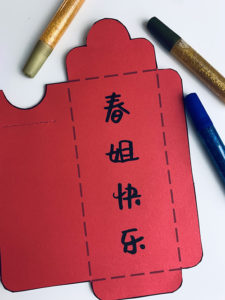
I have created printable Red Envelope Templates with the Montessori classroom in mind and have offered 11 different versions featuring the zodiac animal of the year, different styles of Hanzi characters, and two different sayings for the new year, “Happy New Year / Xīnnián kuàilè / 新年快乐” and “Happy Spring Festival / Chūnjié kuàilè / 春节快乐”. The templates can be printed on white or red paper and the children can cut or push pin the outlines and glue the envelope closed, color the animal of the year, and either trace the characters or fill them with glitter glue.
I like to read the book, “Sam and the Lucky Money” when I teach the children about red envelopes. It is about a young boy living in an urban American Chinatown who wonders how he should spend his New Year money.
Share a Traditional Meal

I will often go to my local Asian market and obtain a sampling of traditional Chinese foods such as dumplings/jiǎozi/饺子, lotus root, rice, and almond cookies. I’d like to mention here that I never saw a fortune cookie while living in China (the history of the fortune cookie is that it came from Japan but was popularized in American Chinese restaurants), so please do not provide fortune cookies to the children as a traditional Chinese food.
There are many opportunities for food preparation in the practical life area. You can bring in a rice cooker and show children how to properly rinse the rice (something I learned in China!). You can purchase dumpling wrappers and teach children how to fold dumplings. At the time of this writing, we still cannot have share food or have food prep in our school, so instead I have created miniature dumplings for the practical life area for the children to practice chopstick transferring skills.
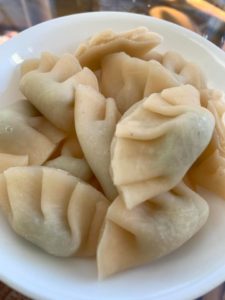
Learn more about traditional Lunar New Years Chinese recipes at the fantastic blog Woks of Life.
Present Spring Cleaning Practical Life Activities
If you have practical life activities that you have yet to introduce to your students the best time to do it is prior to the Lunar New Year activities. Sweeping, dusting, polishing, and other cleaning activities are all wonderful ways to have the students learn skills and you can also share about how this tradition is related to starting a new year fresh and how some people believe this can bring good luck.
Read Books to Educate your Students
While my personal Lunar New Year activities center around the country China as I lived there, it is important to let children know it should not be called only “Chinese New Year” since the holiday is celebrated in many other Asian countries such as South Korea, Vietnam, Japan, Mongolia, as well as many other countries. Lunar New Year is a more inclusive term. I also suggest aiming to find books written by authors with first-hand experience in the culture about which you are learning. I read “Bringing in the New Year” and the book “Little Dumplings” can also provide information about how many different cultures have their own version of something similar such as dumplings.




